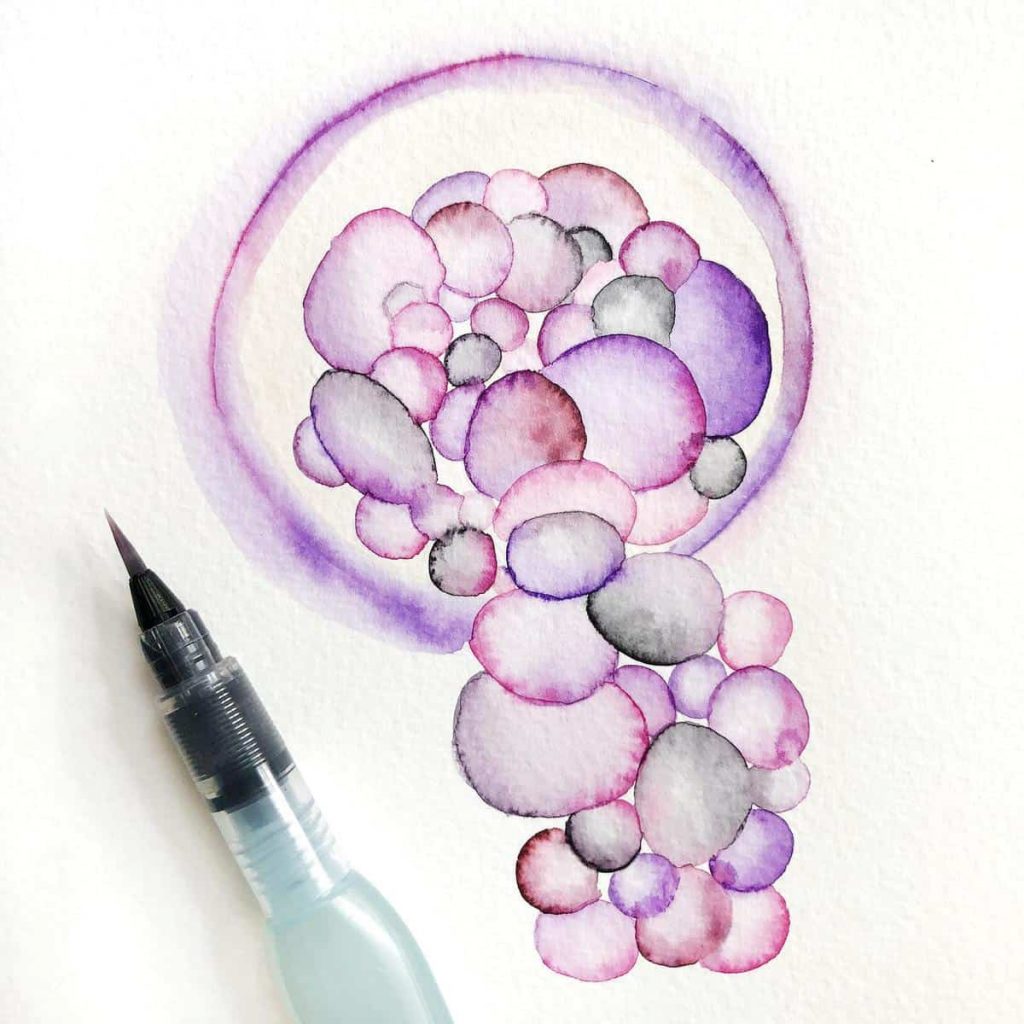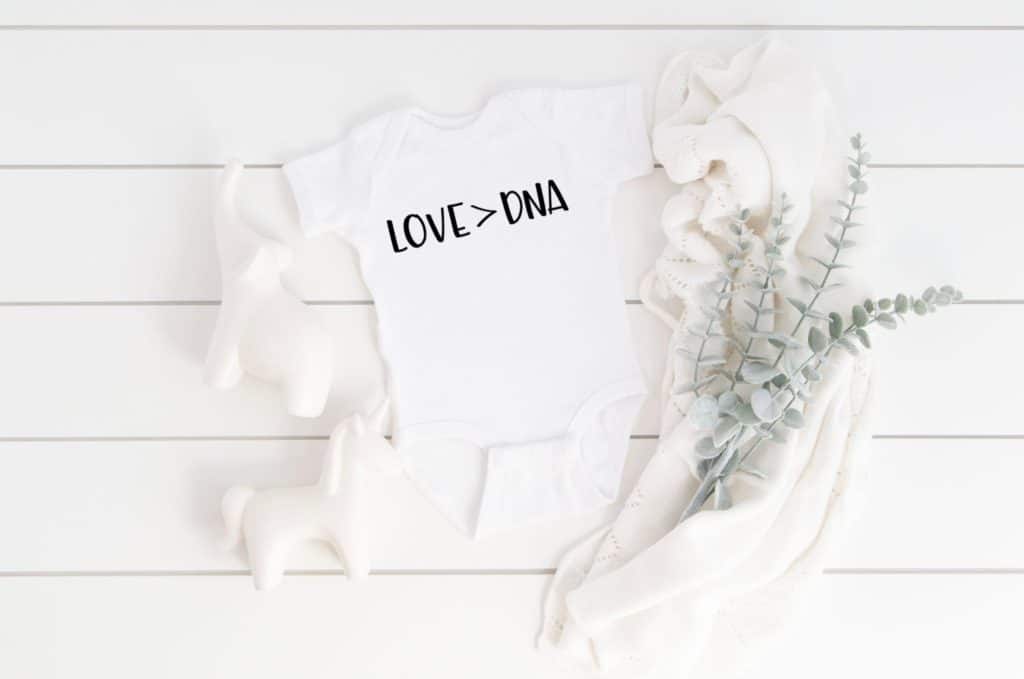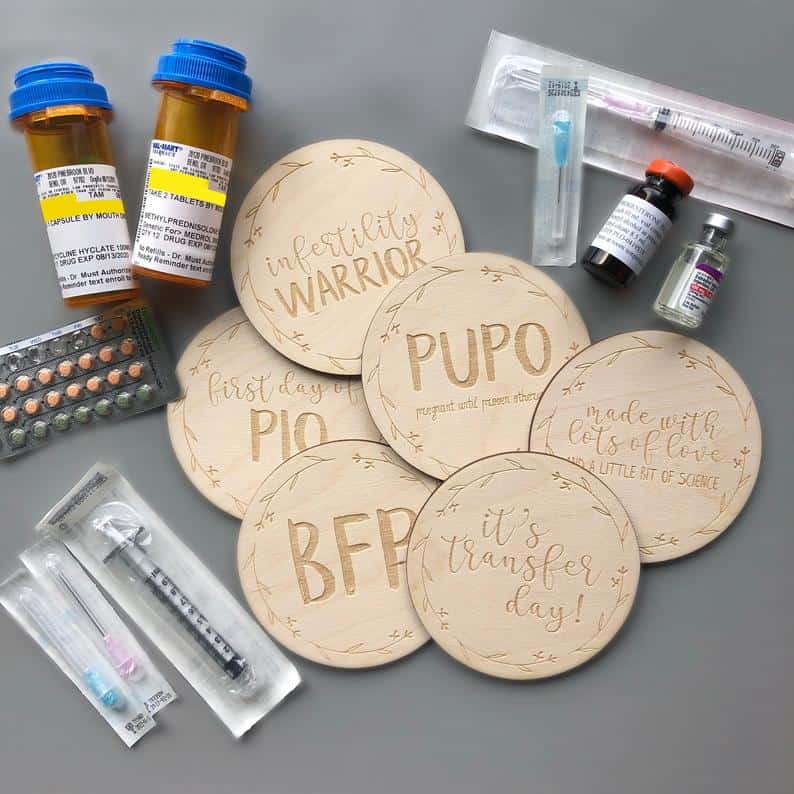Most people these days are familiar with different ways to conceive–ranging from natural conception to intrauterine insemination (IUI) to In Vitro Fertilization (IVF) and more. A conception option that remains less regularly discussed is embryo adoption. If you’ve lived in the fertility world like Katy did when dealing with recurrent miscarriage, then you know exactly what we’re talking about. If not, you’re probably asking, “What is embryo adoption?”
In today’s post, Maria Silver Pyanov tells us the three main things we need to know about embryo adoption, a relatively new option in the infertility world. Maria speaks about embryo adoption from many angles–as a postpartum doula, childbirth educator, and writer for the BellyBelly, AND as someone who has undergone the process of embryo adoption. Here, Maria combines her knowledge of pregnancy and childbirth with personal experience.


This site contains affiliate links, meaning that we earn a small commission for purchases made through our site. We only recommend products we personally use, love, or have thoroughly vetted.
Why Maria Chose Embryo Adoption
As a couple who already had biological children, I assumed that my husband and I were an unusual client at our fertility clinic. Much to my surprise, both clinics I had consultations with assured me I was not. Many clinics see couples interested in growing their families in a variety of ways for a variety of reasons, whether these couples already have biological children or not.
We ultimately chose embryo donation as it was financially affordable, and our chosen clinic made the process very simple.
I also hoped to avoid surgery, which is necessary with traditional IVF.
With an in-house donor program, we were able to streamline our medical care, as well as the process of choosing embryos.
What Is Embryo Adoption?
In the US alone, there are an estimated 700,000-1,000,000 frozen embryos. While some couples freeze surplus embryos in hopes of future siblings for their IVF conceived child(ren), other couples keep embryos frozen while deciding what to do with them.
People who build their family via IVF have four options for their surplus embryos:
- Keep the embryos frozen
- Discard the embryos
- Donate their embryos for scientific research
- Donate their embryos (either directly to another couple or via their clinic)
Embryo adoption is when people who have surplus embryos donate their embryos to another recipient. This is a legal transaction where all rights to the embryos, and the future child, are transferred from one person/couple to another.
In our case, our donors had a successful IVF pregnancy and felt their family was complete. However, they still had several healthy embryos and donated them to our clinic’s in-house donor program.
How does Embryo Adoption Work?
While embryo adoption is like traditional adoption after birth in some ways, many states treat embryo adoption as a transfer of property and not a legal adoption.
Most states recognize the woman who carries and births the baby as the birth mother. If the appropriate documents are done prior to embryo transfer, the birthing couple will simply sign a birth certificate in the same way as if they conceived naturally.
Some states, or countries, may require additional legal involvement, but currently there are no federal US laws that treat embryo adoption as a traditional adoption.
People looking to pursue embryo adoption can do so through an agency or via your fertility clinic. Regardless, all legal aspects should be taken care of for you.
Your donor coordinators will ensure they are following the legal requirements for the state where the transfer takes place, as well as the state where you give birth.
In-House Donor Programs: Maria’s Experience
Our in-house donor program allows donor recipients to browse available embryos. We found a couple with similar physical characteristics, socio-economic backgrounds, and ones who felt strongly about giving their embryos a chance to grow and be born.
While looks aren’t important to our family, we felt that already having biological children–and this not being a traditional adoption–it might be easier on a potential future child if they are similar to the rest of their family.
When it comes to choosing a donor, however, there are no hard and fast rules. Transracial embryo adoption does exist, as does anonymous donation with no access to donor images. Ultimately, it is up to you as a parent or as parents to make the choice that is most comfortable to you.
The Difference Between Embryo Adoption and Embryo Donation
For legal and personal reasons, you might also hear embryo adoption referred to as “embryo donation.”
Some couples, clinics, and agencies use the term donation to ensure people understand it isn’t traditional adoption.
Being legally recognized as a transfer of property, some participants are referred to simply as “donors” and “recipients” of embryos, and the term adoption is never used.
Whether you refer to it as embryo adoption or embryo donation, this process is an excellent option for many people looking to grow their family.
3 Things You Need to Know About Embryo Adoption/Donation
If you’re going through fertility struggles, you may be considering embryo adotpion. Embryo adoption is especially common among people experiencing any of the following:
- Unexplained infertility
- Unexplained recurrent pregnancy loss
- Repeat losses due to genetic abnoramliities in the embryo
- Recurrent miscarriage testing (often known as an RPL workup) that reveals chromosomal abnormalities or low egg count/quality
If you’re among any of these groups, you may be asking, “How do I decide if embryo adoption is for my family?”
If you’re wondering, these 3 things you need to know about embryo adoption should help you decide. It’s also great information to have if you’re supporting others through the embry adoption or fertility process, or if you just want to be better educated about fertility options.
#1: There Are Many Types Of Embryo Adoption And Donation
Just as there are many ways to pursue IVF, egg and sperm donation, and traditional adoption, there are many types of embryo adoption and donation.
The right option varies greatly depending upon one’s circumstances, location, and personal goals and beliefs.
For people considering embryo adoption, it’s important to make an informed decision about the right method for their circumstances.
The types of embryo adoption include:
- Receiving an embryo anonymously through a fertility clinic’s in-house donor program
- Receiving a known embryo through a clinic’s in-house program
- Matching anonymously or known through an embryo adoption or donation agency or coordinator
- Creating an embryo via double donation – using a sperm donor and an egg donor to create embryos
- Facilitating your own match through online forums, ads, or registries
When embryo adoption and donation first began, it was often done through agencies facilitating matches very similarly to traditional adoption. These agencies took time to understand the process, medically and ethically, and likely helped navigate these uncharted waters.

Current Options for Embryo Adoption/Donation
Decades later, with nearly a million surplus embryos, and 1 in 8 couples facing infertility, the options for embryo adoption have grown.
Options for Embryo Adoption
(1) Using a private coordinator or agency is sometimes more expensive. This is because they are navigating additional aspects beyond a simple transfer of property and the actual IVF embryo transfer.
Agencies and coordinators help donors and recipients discuss and decide on any desires, such as contact between the adoptive and biological families after birth.
In some cases, a private coordinator or agency can expedite the matching process. In other cases, if donors or recipients have specific desires, it could take longer than anonymous matches via a clinic.
Deb Roberts of Embryo Connections explains, “Embryo Connections, a concierge service, connects potential donor and intended parent families across the US. A little like a matchmaker, families meet with me to share desires about characteristics and interaction and complete a profile. I then find matches that ‘fit.’ When both families say ‘YES!’ embryo case coordinators manage all the process logistics for a smooth donation for all parties. We ensure that intended parents can do their embryo transfers at their own clinics, providing the documentation that allow clinics to easily and confidently accept the embryos to transfer.”
(2) Using an in-house donation program is often an easy way to manage the entire process. One coordinator is able to manage both the legal and medical aspects of embryo donation.
Large fertility clinics sometimes have little to no wait list for embryos. In some cases, though, the wait can range anywhere from a few months to a couple years.
It is all based upon how frequently couples are donating their embryos.
(3) Some couples choose to facilitate a match privately. They typically need to employ a lawyer to draw up the proper contracts and transfer of property. These couples also need to coordinate with a fertility clinic that participates in private transfers.
Our decision to use an in-house program at our clinic was based on financial reasons as well as embryo availability. We liked the ease of a streamlined process, from medical screening to receiving embryos and right through transfer.
That said, for recipients desiring specific traits, open relationships, etc., a private arrangement with an agency or concierge is often a better choice.
#2: People Choose Embryo Adoption For Many Reasons
Just as there are many reasons people choose IVF or traditional adoption, there are many reasons couples may choose to adopt embryos. An obvious reason is facing infertility, but beyond that, there are still many reasons people choose this route for growing their families.
Reasons include:
- Male factor infertility and not wanting to use only a sperm donor
- Being a single mother by choice and preferring this route to sperm donation, IUI or traditional IVF
- Needing IVF for medical reasons but wanting to avoid egg retrieval surgery
- A personal, religious or moral desire to give embryos a chance to live
- Suffering from infertility but desiring an opportunity to carry and give birth
- Desiring to adopt a child but also wanting to experience pregnancy
- Being carriers of severe genetic disorders
- Needing IVF or adoption in order to have children but choosing donor embryos for financial reasons. Some embryo adoption options are significantly less expensive than traditional IVF and adoption.
In my family’s case, we had made a permanent decision to end building our family biologically. After doing so, we pursued fostering and adoption, but due to a significant and untimely loss, we felt our family wasn’t complete.
Using donor embryos allows us the option to continue building our family with less invasive procedures than IVF. It also requires less legal involvement, paperwork, and waiting than traditional adoption.
#3: The Embryo Adoption Process Can Be Quick. Or Not
Some people can transfer quickly from the time they first pursue embryo adoption. For other people, it can be several months to a couple years before their first transfer.
There are many variables involved in the embryo donation process.
For people already working with a fertility clinic, the process is often faster.
All their prerequisite medical testing is likely to be complete. The FDA requires certain blood work screenings.
Many reproductive endocrinologists also examine the uterus, hormone levels, etc. to ensure you are healthy enough for a pregnancy.
Clinics following the recommendations of the American Society of Reproductive Medicine, will require their embryo recipients (and donors) to have a pyscho-education session with a qualified professional.
This session ensures the recipient(s) understand the process and potential outcomes of embryo adoption.
The Embryo Adoption Process
- Determining the cause of infertility, if applicable, to ensure it won’t prevent a successful embryo transfer
- A Saline infusion sonohysterography to check the health of the uterus, ensure no polyps, fibroids, etc. If anything is found, they may or may not remove growths via an operative hysteroscopy
- Completing FDA required blood testing for communicable diseases
- Having a psycho-education session
- Getting access to a donor embryo registry, waiting to make a match privately, or waiting for a match via coordinator or agency
- Legal paperwork to facilitate the transfer of property for the embryo(s)
- Baseline blood work and ultrasound to prepare for a transfer cycle
- Begin a frozen embryo transfer protocol, which is the same whether using your own embryos or donated embryos
- An embryo transfer may take place after a couple weeks of estrogen, and about five days of progesterone
- Approximately 10-14 days after embryo transfer an hcg beta test is done to determine if the transfer led to a pregnancy
This process may take just a couple months, or it could take several months to over a year.
Typically, the longest wait is finding a match. Some clinics and agencies have no wait time. While other clinics and agencies have a wait time of 6-24 months or longer for embryos.

Our Experience with Embryo Transfer
In our case, from our first consult through transfer took exactly two months. We inquired February 26th and transferred our first embryo April 26th.
While our first transfer was successful, it unfortunately ended in a miscarriage due to Trisomy 21. This was a complete fluke, and occasionally just happens, just like in natural conception.
If you’re interested in reading more about chromosomal abnormalities, their potential effects, and genetic testing, see our articles:
- “On Chromosomal Translocations: Advocating for your Special Needs Child” and
- “A Crisis of Faith: Terminating for Medical Reasons”
Some families opt to spend more money for genetic testing to check for any chromosomal abnormalities. Others choose to only receive embryos that were donated after genetic testing.
In our case, we took a chance. If we transfer another embryo and it is successful, we’ll be looking at about 18 months from first consult through to live birth.
Chances of Live Birth After Embryo Transfer
Time from the beginning of the process to live birth can vary significantly, as well. Some people have a successful first transfer, while others require multiple transfers to reach a live birth.
Like traditional IVF, each cycle has around a 43% chance of live birth. The pregnancy rate is higher. However, not all pregnancies result in a live birth.
Choosing a donor who is under 35 at the time of egg retrieval does improve the odds of a successful transfer compared to donors over the age of 36.
If donors had Pre-Implantation Genetic Screening (PGS) conducted on their embroys, then recipients know the embryo being implanted is chromosomally normal. In those cases, the success rate for a cycle can be as high as over 60%.
Some clinics allow received embryos to be thawed, biopsied, and refrozen until transfer so they can be PGS tested if the donor did not opt for PGS testing. This decision comes with an increased fee, plus a small risk the embryo will not survive being thawed, refrozen, and then thawed again for transfer.
What Are the First Steps?
If you are interested in proceeding with or learning more about embryo adoption, you can learn more by visiting the following sites:
Pursuing embryo adoption is a unique but growing option for people looking to grow their families.
While it isn’t the solution for every couple facing infertility, it is an affordable and positive option for many families and one that we will consider as we grow ours.
Are you considering growing your family with embryo adoption? Let’s talk about it in the comments!

Maria Silver Pyanov is mama to five living children, five little ones she never got to hold, and one special boy she held for almost two months. She’s a birth, parenting and faith writer who believes all pathways to building a family need to be celebrated, which is done through awareness. She writes at www.busymomsguidetofaith.comand https://www.bellybelly.com.au.
Other Infertility Articles
- Fertility and infertility definition + what it’s like
- Laura’s primary ovarian insufficiency story
- What it’s like using donor eggs
- Carly’s cancelled IVF cycle
- In-person and online infertility support groups
- How to comfort a friend who can’t get pregnant
- What to say to someone struggling with infertility











One thought on “What Is Embryo Adoption? 3 Things You Need To Know”